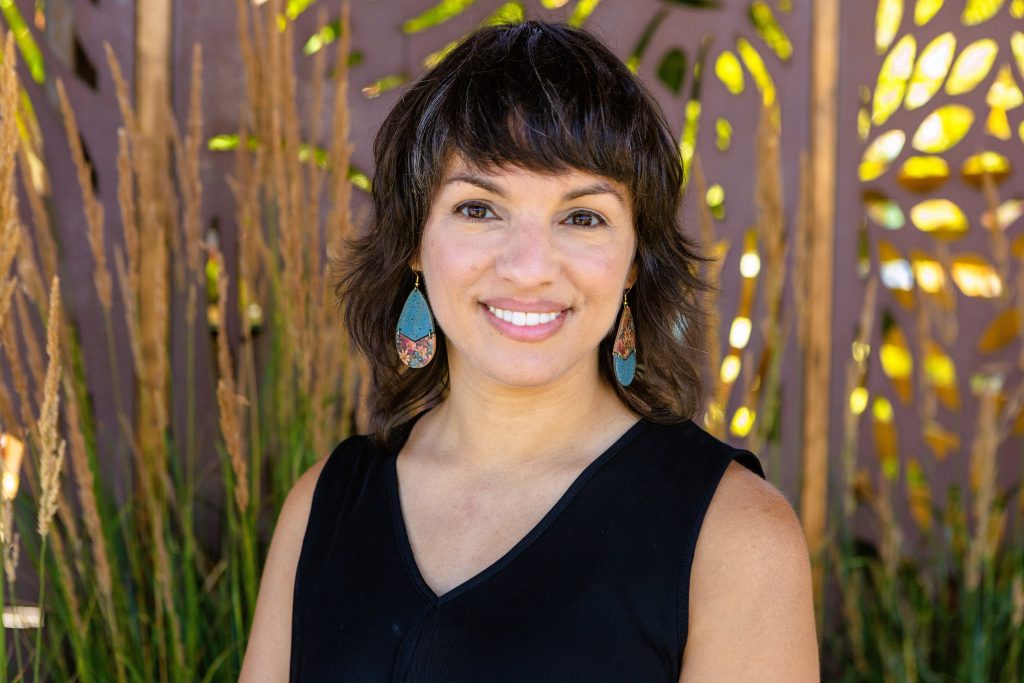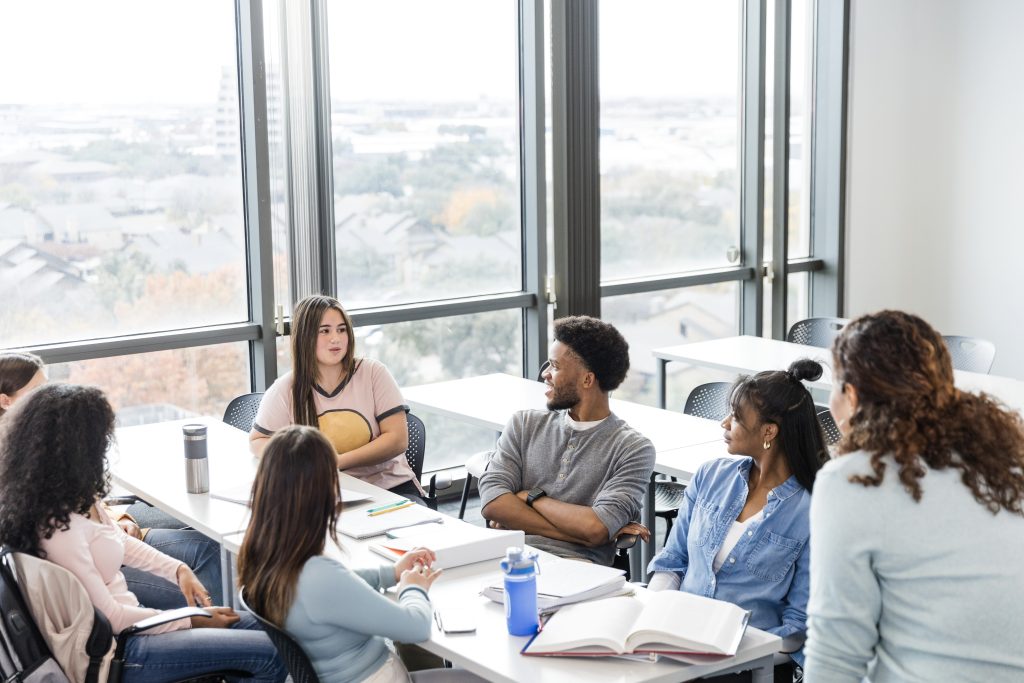Creative, Connected and Committed: Colleges and Universities Double Down on Civic Engagement
July 15, 2022
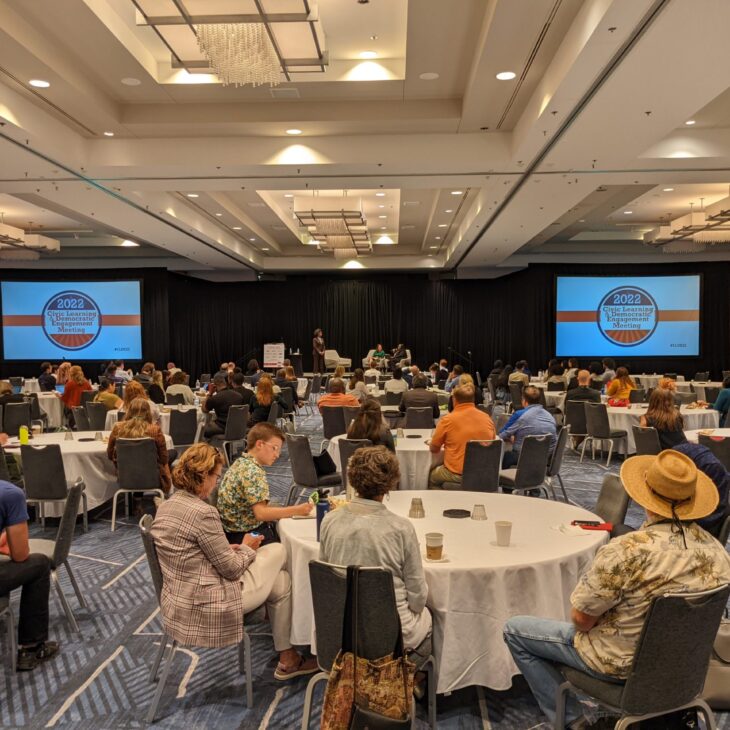
For three days in late June, several hundred educators, students, and civic organizational leaders gathered in Minneapolis for the Civic Learning and Democratic Engagement meeting with the theme “Equity and Democracy.” A partnership between the American Association of State Colleges and Universities’ (AASCU) American Democracy Project (ADP) and the National Association of Student Affairs Professionals Association (NASPA), this annual gathering addresses big questions like – what is the state of American democracy and how is higher education strengthening it? If you want to cultivate a realistic optimism about the state of the nation, join this gathering next year to engage in a few standout initiatives like those briefly detailed here.
The Campus Vote Project has a Legacy Initiative that seeks to understand the specific barriers that Historically Black Colleges and Universities (HBCU) students and campuses face when participating in the electoral process and then support campuses to remove those. As Dylan Sellers, National HBCU Manager, shared, “There are no voting rights, civil rights or student voting rights without HBCUs. But they still do not reap those benefits.” Nonetheless, leaders at HBCUs continue to mobilize; Dr. Courtney Williams, Director of the Center for Student Engagement and Leadership at Dillard University partners with colleagues to mobilize a march to the polls to get out the vote and empowers Dillard students’ own creativity, entrepreneurship and passion to strengthen civic engagement throughout the year. Dr. Williams shared a dozen pictures and stories with participants, detailing his students’ specific impact and achievements and was beaming the entire time.
At the University of Nebraska Omaha, there is a collaborative between the Service Learning Academy, Schwalb Center for Israel and Jewish Studies, Black Studies and Geography Departments called the “Addressing Redlining through Community Engagement Initiative.” The project began with the discovery that African Americans and Jews were both explicitly barred from home ownership in deeds throughout Omaha in the early to mid-20th century. This is part research project (because telling the truth and remembering history informs our present) and part community empowerment with a community board that will create a community development and engagement strategy to guide investment within and from redlined areas of the city.
Share
Related Articles
American Civic Life
Higher Education
What Does Interfaith Engagement Mean from an Evangelical Perspective?
Higher Education
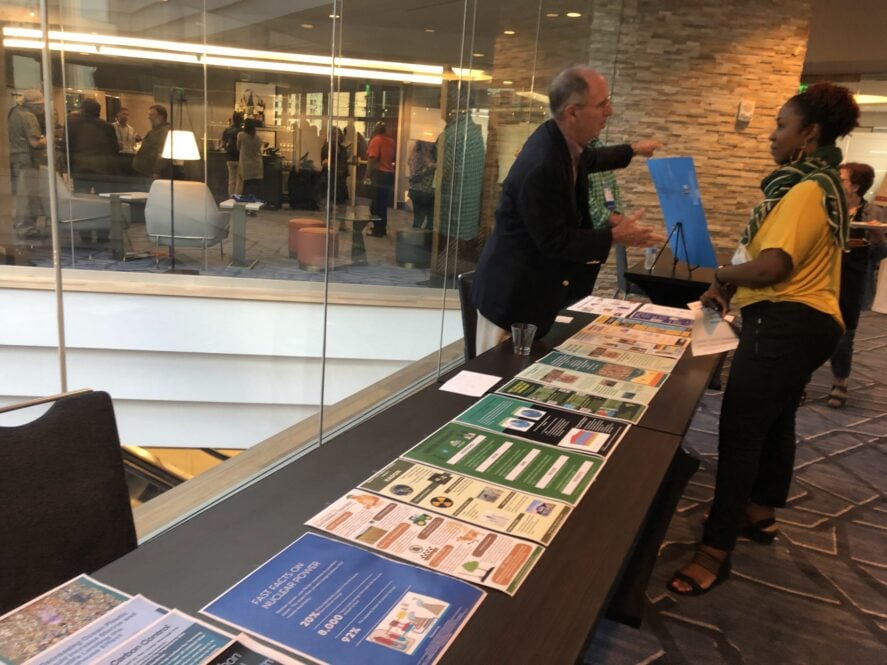
Civic Learning and Democratic Engagement conference. Photo credit can be Cathy Copeland
Keene State College and Weber State University have partnered on the 4Quad Diagnostic. Tired of overly simplistic discourse on the political “right” and “left,” they developed a diagnostic that maps a person’s attitudes and classical political classification on a range of issues. Kimberly Schmidl-Gagne in the Office of the Provost & Office of Diversity and Multiculturalism and Professor of Economics Patrick Dolenc have used the diagnostic with their students at Keen State in New Hampshire around election seasons to give students robust tools to articulate their own beliefs and positions with nuance. Leah Murray, Academic Director of Weber State in Utah, found that many of her students self-ascribed political identity clashed with their own responses to specific questions. This tension was further complicated by genuine questions of what their faith calls them to do in the world, a question heightened by the prominence of the Church of Jesus Christ of Latter-Day Saints in and around campus.
These three examples are a glimpse into the 60 presentations digging into how campuses and civic organizations are working to strengthen civic skills and justice together. Together this group of committed civic leaders laughed with Jane Coaston (host and editor of the New York Times’ “The Argument”) and cried as Steve Drummond (Executive Producer, NPR) played moving radio stories that broaden the public’s conception of students.
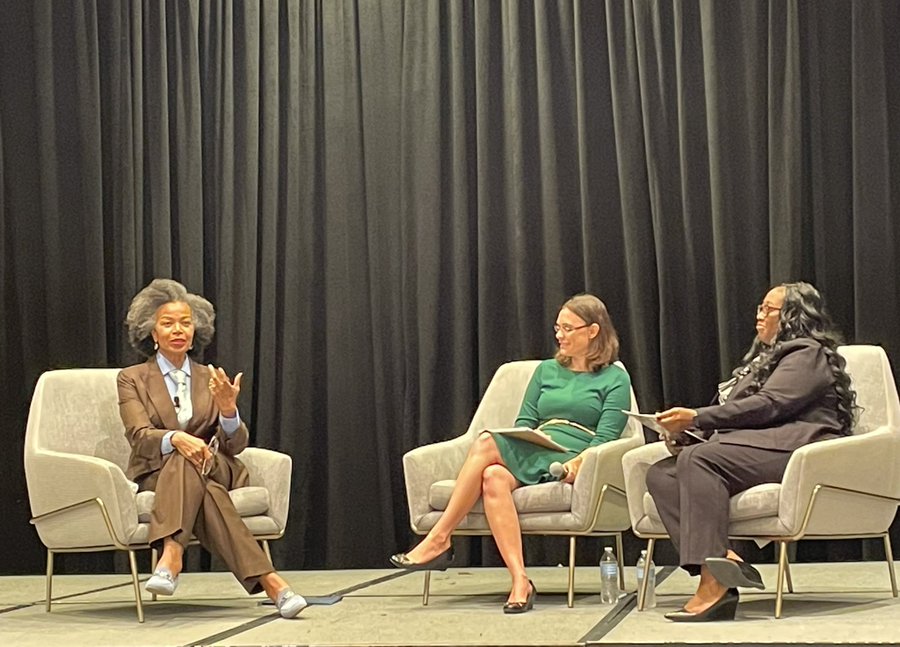
Civic Learning and Democratic Engagement conference session with Ambassador Gina Abercrombie-Winstanley (left), the first Chief Diversity and Inclusion Officer of the US Department of State. Photo credit can be Cathy Copeland
And I was awestruck by Ambassador Gina Abercrombie-Winstanley, the first ever Chief Diversity and Inclusion Officer of the US Department of State; in addition to her three decades of service representing the United States abroad, she remains deeply invested in strengthening and improving the US Department of State to equitably harness the contributions of all Americans. For instance, they know that more men pass the Foreign Service written exam (which emphasizes knowledge that can be learned) and more women pass the oral exam (which emphasizes contextual skills that are earned through experience); with the Ambassador’s leadership they have removed the previously limiting “cut off” score on the written exam to enable more gender diversity to elevate the skills that the Foreign Service needs. The elevator after her talk was buzzing with many mid-career professionals asking out loud, do I want to be a diplomat?
In a diverse democracy, of course we will cherish a broad range of values and disagree on ultimate concerns. It can be hard to pierce through the noise and find, much less build, genuine relationships with new people who care about building a shared community together. Yet as I continue to follow the January 6 hearings, tune into limited portions (for my own sanity) of the passionate outrage around a range of Supreme Court rulings, and contribute in small ways to some of the major crises impacting our communities (mental health crises, education gap, for instance) I genuinely believe the community that gathered in Minnesota, when we galvanize our networks and communities, have a chance to make a real difference. The invitation is always open.


